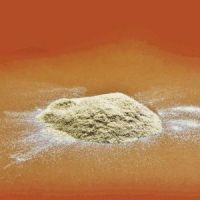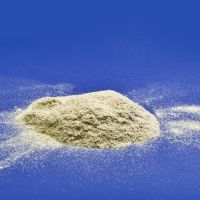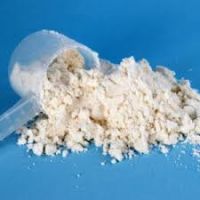Dry ground mica
 In accounts for over 85% (based of quantity produced) usually carried out in high speed hammer mills fitted with a series of vibrating screens of different sieve mesh with an air – separating device. It’s a more convenient, simpler and an economical process.
In accounts for over 85% (based of quantity produced) usually carried out in high speed hammer mills fitted with a series of vibrating screens of different sieve mesh with an air – separating device. It’s a more convenient, simpler and an economical process.
Another device for dry grinding mica by means of fluid energy is the majac mill. Mica is fed continuously from a screw conveyor into chamber containing two horizontal directly opposed jets. The mica particles are entrained in the two directly opposite fluid streams, air or steam, and are ground by the attrition resulting from high velocity impacts between particles. The ground mica then discharges to a screening operation and classified through various sized fractions having respective particle size ranging from 2 up to 325 sieve mesh (9,5 mm do 44 µm), and finally bagged for marketing. The dry ground mica has been found suitable for most of the industrial applications and is therefore most popular.
Wet ground mica
 It is produced in mills of the chaser types and grain size are obtained in the range of 40 - 100 microns. Wet ground mica is characterized by a high degree of silvering - beading and high purity.
It is produced in mills of the chaser types and grain size are obtained in the range of 40 - 100 microns. Wet ground mica is characterized by a high degree of silvering - beading and high purity.
Chaser type mill consists of a cylindrical steel tank with a diameter of 6 to 10 feet and height of 3 to 5 feet. The bottom is lined with wooden blocks laid with the end grain up. Four wooden rollers of 2 to 3 feet in diameter and 1 to 3 feet across the faces revolve round a central shaft, at 13 to 30 r.p.m. These rollers are so fitted that they can be raised or lowered according to the height of the charge in the wall. Cleaned and washed mica scrap is fed into the mills, water is added and the rollers revolve at low speed and churn the mass until the grinding is complete.
After about 36 hours the water is siphoned from the settling tanks, the sludge is dewatered and dried either in steam-jacketed kettles or in a steam-heated drier. The dried product is sieved on multiple-deck vibrating screens, usually in 160 and 325 mesh (100 - 44µm), and finally bagged for marketing. Wet ground mica have a high metallic luster or silvery sheen and is free from grit. However, it is a slow and costly process, and therefore, the product is relatively expensive.
It is especially used as a pigment extender in paints, particularly in zinc-oxide paint and as a mould lubricant and dusting agent in pneumatic tyres as well as wall paper.
Micronized mica
 It is produced in a special type of dry grinding machine that has no moving parts but depends on jets of high-pressure superheated steam which is capable of reducing the mica to ultrafine particles size ranging between 5 to 45 microns. This machine consist of shallow circular grinding chamber into which minus 6 mesh mica is fed continuously. High-pressure steam issued from orifices around the periphery of the chamber and set at an angle of the wall, keeps the mica rotating at a high speed. Grinding is accomplished by the innumerable collisions of the mica particles whirling at high speed. The steam is withdrawn at the center of the grinding chamber. As the mica particles become finer, centrifugal force no longer keeps them the near the walls of the grinding chamber. The fine mica gravitates towards the center and drops into the chamber below through a conical bottom and discharged for bagging for marketing.
It is produced in a special type of dry grinding machine that has no moving parts but depends on jets of high-pressure superheated steam which is capable of reducing the mica to ultrafine particles size ranging between 5 to 45 microns. This machine consist of shallow circular grinding chamber into which minus 6 mesh mica is fed continuously. High-pressure steam issued from orifices around the periphery of the chamber and set at an angle of the wall, keeps the mica rotating at a high speed. Grinding is accomplished by the innumerable collisions of the mica particles whirling at high speed. The steam is withdrawn at the center of the grinding chamber. As the mica particles become finer, centrifugal force no longer keeps them the near the walls of the grinding chamber. The fine mica gravitates towards the center and drops into the chamber below through a conical bottom and discharged for bagging for marketing.
Undoubtedly, it is the finest grade of ground mica, as well as, competitively cheaper than compared to wet ground mica. It is suitably used as filler in paints and plastics and in cosmetics.
While every attempt has been made to verify the source of the information, no responsibility is accepted for accuracy of data.





